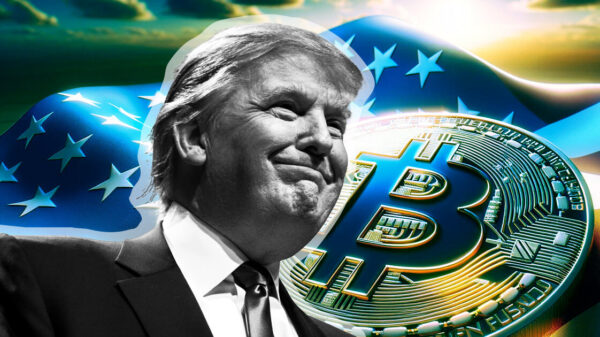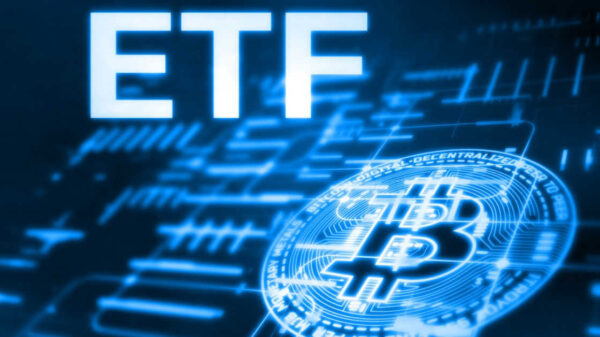Myanmar’s economy has been crippled since the February 1, 2021 coup. The World Bank predicted that it would contract by 18% per year. As a result, the Myanmar kyat has lost 60% of its value as of September 2021. This is an all-time low: on September 17, 2021, the black market value of Myanmar kyats (MMK) to US dollars (USD) was 2200, down from 1330 before the coup. These facts demonstrate the public’s mistrust of the military-led State Administration Council (SAC).
People’s reliance on banking systems and the entire financial mechanism has been reduced. It pushes Myanmarese people to use cryptocurrencies as an alternative currency. Both the SAC and the shadow National Unity Government (NUG) acknowledged this requirement with their respective mandates: the former to use digital currency to heal the crippled economy and avoid sanctions, and the latter to separate the existing currency from the state and establish an alternative independent currency to ensure free and secure funding streams. Both parties have also announced cryptocurrency initiatives; it will be interesting to see who emerges victorious in this battle of crypto dreams.
The crypto dream of the revolutionaries
Last year, an anonymous developer group created MYD, a digital currency that aims to free people from the junta’s centralized currency. The cryptocurrency intended to fund the NUG with 45 percent of its currency and distribute the remaining 55 percent to citizens. MYD, on the other hand, ceased operations in December 2021 due to a failure to build a scalable user base and accessibility issues. Following that, the NUG announced that Tether (USDT), a stable cryptocurrency with a dollar peg, would officially replace the Myanmar kyat. U Tin Tun Naing, the NUG’s minister of planning, finance, and investment, stated, “When the time comes and if it is required for our revolution, we will definitely expand the list of our approved cryptocurrencies.” The anti-junta group’s desire to empower cryptocurrency is significant, as evidenced by these initiatives.
However, NUG’s cryptocurrency selection has some questionable aspects. The NUG government chose Tether to prevent transaction tracing, to create better and faster transactions, and to achieve financial stability. Tether is the third largest cryptocurrency, with a market cap of USD 76 billion, and it, like Bitcoin, can be transferred in transactions that are difficult for governments to track.
However, in terms of financial stability, US Federal Reserve President Eric Rosengren warned in June 2021 that Tether could pose a risk to financial stability. Bernhard Muller, a crypto trader, DeFi (Decentralized Finance) auditor, and security analyst, also wrote that Tether could become a cryptocurrency black swan, with its stability collapsing dramatically. It is unclear whether the shadow government’s crypto dream will be reliant on Tether.
Long before the coup, all forms of cryptocurrency were outlawed in Myanmar. The Central Bank of Myanmar (CBM) declared a cryptocurrency ban in 2020, referring to Bitcoin (BTC), Litecoin (LTC), Ethereum (ETH), and Perfect Money (PM), and all traders would face monetary penalties. Again, in response to the NUG government’s declaration of Tether as official currency in December 2021, the SAC drafted a cybersecurity law that criminalized the use of VPNs and cryptocurrency in January 2022. The military’s move is ironic in that, shortly after the ban on cryptocurrency, in February 2022, they announced that they are developing a digital currency.
Maj General Zaw Min Tun, the military’s SAC spokesperson, stated, “A digital currency will help improve financial activities in Myanmar.” The SAC is attempting to resurrect the badly damaged economy through the use of digital currency. Central banks from around the world are pursuing the dream of Central Bank Digital Currency (CBDC), such as China’s Digital Yuan project, in order to boost economies hit by the pandemic. Nonetheless, at a conference, Kim Edwards, the World Bank’s senior economist for Myanmar, stated, “We think the country is not in the best position to pursue something like this.”
The military, on the other hand, has been surveilling and arresting anti-junta groups by tracking phone numbers from Wave Money, K Pay, CB Pay, and other services. Another possibility for the junta’s goal of a digital currency is the dream of centralized manipulation of people’s transaction data in one place so that they can monitor and control citizens more seamlessly.
The role of cryptocurrency in resistance and repression
The grand discourse of the cryptocurrency movement itself leads to the decoupling of currency and state. It is clear that, since Satoshi’s whitepaper, the narrative surrounding cryptocurrency has been all about resisting state power. Venezuela’s cryptocurrency revolution has been portrayed as a model of both resistance and repression.
Venezuela is one of the world’s fastest adopters of cryptocurrency. Since 2013, the bolivar has lost over 2000% of its value against the US dollar, resulting in the world’s most extreme hyperinflation. Sanctions imposed by the US and a skyrocketing unemployment rate are adding fuel to the hyperinflation fire. To get out of the situation, Venezuelans turned to cryptocurrencies, which they can freely use anywhere in the world without government regulation. One of the best examples of resistance would be Valiu, a blockchain-based remittance platform. Venezuelans in the diaspora can send money to their families in Venezuela, buy food and other necessities with Valiu, and invest in cryptocurrencies with pesos. However, due to the risks of Venezuela’s situation, the great initiative announced its closure in December 2021.
On the repression front, the Venezuelan government is attempting to centralize the crypto movement through the creation of Petro, a national digital currency. Venezuela is just one of many countries interested in using cryptocurrencies or blockchain-based digital currencies for centralization and surveillance. For example, China has been urging the creation of a national digital currency, Digital Yuan, which the People’s Bank of China (PBOC) has referred to as a “sovereign currency” since 2014.
According to the Washington Post, the Chinese Communist Party (CCP) wants to increase surveillance of its people by establishing a more centralized digital currency. The Digital Yuan only allows for “controlled anonymity,” which means that the state will define and control citizens’ personally identifiable information to a large extent. The currency will function as one of the toolkits of China’s “Social Credit System,” which is one of the world’s most intrusive digital public administration tools.
In conclusion
Venezuela’s crypto revolution currently shares political and economic contexts with Myanmar. However, in Myanmar, both sides’ strategies for crypto dreams focus on legislative activities rather than the development of the crypto economy. In the case of Venezuela, rather than legislation, the development of the crypto economy was driven by social digital innovations, a deep understanding of value creation and distribution, and the ability to reach out to grassroots communities. Myanmar’s crypto revolution is just getting started in its tug of war between repression and resistance. It will be crucial in Myanmar’s political revolution, determining whether the country will be able to restore democracy or sink into authoritarianism
















































